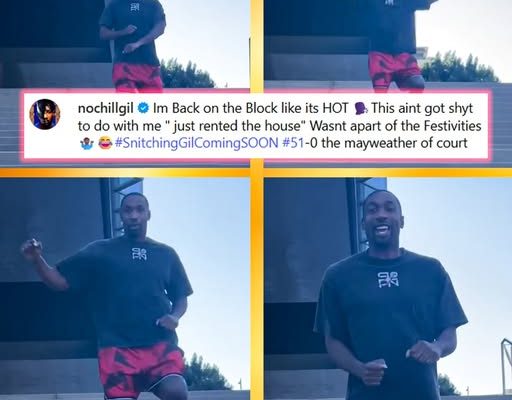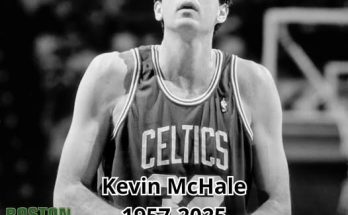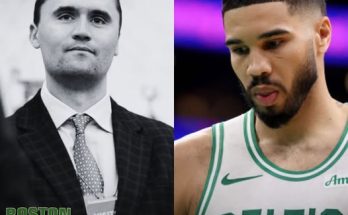The Indiana Pacers have long been a franchise known for stability, careful growth, and avoiding rash decisions, but in one of the more surprising moves in recent team history, they made a decision in contract negotiations that has caught league insiders and fans completely off guard. The deal in question wasn’t about a superstar free agent or a blockbuster trade, but rather a strategic contract decision that signals an aggressive shift in the Pacers’ operational mindset. While not immediately seen as seismic, the implications of how this deal was negotiated—and what it represents for Indiana’s future—are already reverberating across the NBA landscape.
At the center of this unexpected development is a player who, while not a household name, has proven to be crucial to the Pacers’ long-term plans: Obi Toppin. Fresh off a strong campaign where he finally seemed to find a consistent role and rhythm in Indiana’s system, the Pacers had a choice to make. Let him hit the market and potentially overpay to keep him, or get out in front of negotiations and lock him in early. But instead of playing it safe or dragging things out, Indiana did something few expected—they offered a frontloaded, short-term contract with performance escalators that could reward Toppin handsomely if he continues to thrive in their system. The twist? The contract contains a unique team option structure in the final year that includes a buyout mechanism rarely seen in mid-tier player deals.
What makes this move so surprising isn’t just the financials—although the guaranteed money in the first two years was higher than expected—but the messaging behind it. This was not a conservative “prove-it” deal, nor was it a standard mid-level exception. It was a calculated bet with a high ceiling and a strategic out for the franchise. For a team like the Pacers, who don’t traditionally swing for the fences in free agency and often rely on the draft and internal development, this deal signals a new level of confidence in their roster construction and financial management. It also suggests they may be positioning themselves for something much bigger—perhaps setting the stage for an even more impactful transaction down the road.
League insiders were particularly intrigued by the structure of the team option. The buyout clause gives Indiana the ability to cut ties at minimal cost if the fit deteriorates or if they need cap flexibility in the summer of 2026—a time when several major free agents are expected to hit the market. But if Toppin continues his upward trajectory, they could lock him in for another year at a manageable number, retaining one of the most athletic and versatile forwards in the league for below-market value. That type of flexibility is rare, and the fact that Toppin’s camp agreed to such terms suggests mutual confidence and trust between the player and the franchise.
This decision didn’t happen in a vacuum. Over the past two seasons, the Pacers have slowly but surely rebranded themselves. With Tyrese Haliburton leading the way and head coach Rick Carlisle tailoring his system around youth, pace, and versatility, Indiana has become one of the league’s most exciting young squads. Their performance in the In-Season Tournament and their surprising playoff push last year raised eyebrows. Now, with the Eastern Conference in a state of flux—aging cores in Boston and Milwaukee, uncertainty in Philadelphia, and stagnation in Miami—the Pacers seem to smell opportunity. They’re not just building for the future anymore. They’re trying to win now, and smart deals like this one are part of that broader strategic pivot.
The reaction around the league has been mixed but largely positive. Rival executives admire the foresight Indiana displayed, recognizing how rare it is for a mid-market team to thread the needle between long-term flexibility and short-term investment so deftly. However, some have also pointed out the potential risk. Toppin, for all his improvement, is still a player with a limited track record as a consistent starter. His defensive awareness, rebounding discipline, and outside shooting all remain works in progress. If he regresses, the Pacers could be stuck with an awkward fit or forced to eat a buyout sooner than they’d like. But that’s a gamble the front office seems comfortable taking, especially considering the broader landscape of the league’s shifting power balance.
Another layer to this decision is how it impacts the rest of the roster. By securing Toppin on a deal that keeps future flexibility intact, Indiana can now turn its attention to other pressing matters—namely the long-term future of players like Andrew Nembhard, Aaron Nesmith, and Bennedict Mathurin. With cap room to spare and a clearly defined vision, the Pacers are in a better position than most to act decisively in upcoming offseasons. Their ability to reward players without compromising flexibility is a testament to the front office’s improved cap strategy under President of Basketball Operations Kevin Pritchard, who’s often been criticized in the past for playing it too safe.
Perhaps most intriguingly, this move hints at Indiana’s desire to stay out of the messy, unpredictable world of free agency. By handling their own business early and aggressively, they avoid bidding wars, player poaching, and overpaying for marginal talent. The Toppin deal shows that the Pacers now view themselves as capable of setting the market rather than reacting to it. That kind of organizational confidence hasn’t been associated with Indiana in quite some time—not since the days of Paul George and David West, or the earlier Reggie Miller years. It’s a welcome shift and one that could alter the trajectory of the franchise for the better.
The deal also says something about Toppin himself. For much of his early career in New York, he was pigeonholed into a role that didn’t maximize his athleticism or skill set. Limited minutes, a cluttered frontcourt, and a system that didn’t cater to his strengths left many wondering if he’d ever reach his potential. But since arriving in Indiana, he’s shown flashes of becoming the player many envisioned when he was drafted in the lottery. This contract is a recognition of that progress—but it also puts pressure on him to keep improving. The incentives are there. The stage is set. Now it’s up to Toppin to rise to the moment.
From a team chemistry perspective, this type of deal can have ripple effects in the locker room. It demonstrates to other players that Indiana is willing to invest in its own. It shows that performance will be rewarded, that development will be acknowledged, and that this is an organization where growth translates to opportunity. In a league where loyalty often feels one-sided, especially for non-superstars, that kind of message matters. It can create a culture of buy-in, especially among younger players still trying to prove themselves.
And then there’s the trade market dimension. With Toppin on a movable, value-conscious deal, he becomes an asset—both on the court and on the books. If the Pacers decide to make a major play for a star via trade, Toppin’s contract could serve as a key piece in balancing the books. That kind of optionality is invaluable. It means the Pacers can stay flexible, adaptable, and opportunistic—a trio of traits that often define successful franchises in today’s NBA. The fact that they acquired Toppin on a low-cost deal from New York last season and have now turned that asset into a long-term investment is the kind of low-key brilliance that winning front offices execute regularly.
For a team that hasn’t been a championship contender in over a decade, and one that often gets overlooked in national conversations, this negotiation could be a turning point. Not because it involves a superstar or a huge splash, but because of what it says about Indiana’s direction. They’re no longer just trying to make the playoffs. They’re building something sustainable, smart, and potentially formidable. And they’re doing it their way—quietly, deliberately, and with growing confidence.
So while the headlines may not scream blockbuster, make no mistake—the Pacers made waves with this one. The structure, the foresight, the intent behind the numbers—this was a move made by a franchise that finally seems ready to evolve. And as history has shown, it’s often these kinds of shrewd, under-the-radar decisions that separate good teams from great ones in the long run. Indiana may not be done yet, and if this deal is any indication, the league might want to start paying closer attention.



